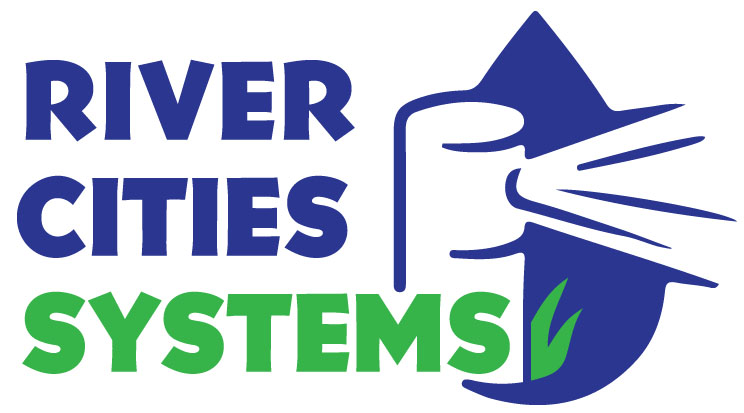3 Steps To Having a Perfect Lawn
The 3 Steps To A Perfect Lawn
By Chad Castellanos
Irrigation Technician
One of the main issues that we see people struggling with their lawns today are dry patches throughout their entire lawn. This can be a pain for a number of reasons. Having a crispy dry lawn can decrease your property value, and can cause many other issues that you may not be aware of.
When it rains on a dry lawn that doesn’t have adequate moisture, the rainwater just erodes your soil and runs off into the sewer. After a rainfall, instead of your soil acting like a sponge, it doesn’t have time to trap the moisture and will channel the runoff wherever gravity takes it.
Lastly, having a dry lawn is uncomfortable. It is uncomfortable to sit in, it is uncomfortable to walk barefoot in, it is uncomfortable for your kids to play in, and it makes your house and property look a lot duller than it really is. This problem can be solved with just a few simple steps.
Over the last 15 years I’ve been working to solve this and today I want to tell you 5 powerful steps that you can take to green up your lawn and will make your landscape glow, and will allow you and your family to be comfortable outside.
The Best Part? With these powerful methods you can get results in as little as a week or two.
Let’s Dive In:
3 Steps to eliminate your dry lawn.
Step 1: Fertilize
Generally, there are three important times to apply fertilizer during the year – spring, mid summer, and fall. Lawns wake up hungry in the spring.
Spring Application:
Feeding your lawn in the spring will strengthen the roots, will help thicken your lawn and prepare it for the summer. If you had crabgrass last year, you can purchase an application that has a blend that will prevent crab grass before it roots. The key is to apply the crab grass prevention blend before the soil gets too warm, or else it will be too late, and the roots will already be formed. The general rule of thumb is that you want to apply crabgrass prevention before you see the lilacs in your area bloom. If it is a few days after you will be fine, but after a few weeks when the soil gets warmer, the crabgrass will already be germinated, and once it roots the crab grass application part of the blend will not work.
Mid Summer Application:
The middle of the summer can be brutal for your lawn and soil. All the foot traffic combined with high heat can take a toll. You want to apply a mid summer application blend to help combat these issues. If you feed your lawn with what it needs, it will help your lawn thrive during these stress periods.
Late Fall Application:
Fall time is a recovery period for grass. It just got thrashed from the foot traffic and hot summer and is now getting ready to wind down for the hibernation period. Many experts say that fall is the best time to apply fertilizer – just before the frost comes. It helps increase nitrogen storage, and helps your lawn regenerate for the next season.
Step 2: Test PH
If you notice dry patches in your yard or obvious stress spots where the grass looks different than the rest of your lawn, you most likely either have a moisture problem, or a PH problem. Grass grows best with a soil PH of between 6.0 and 7.5. If your soil is too acidic (below 6) you can add lime to bring the acidity up. If it is alkaline (7.5 – 8) you can add a little peat moss which is naturally acidic and should correct the problem.
Step 3: Maintain Adequate Moisture
Each landscape can vary dramatically in regards to sunlight exposure, wind intensity, and high / low spots throughout the landscape. However, in general, lawns need about 1.5 – 2 inches of water per week. It is not recommended to water every single day but if you would like to keep your lawn healthy, it must have enough water. To test how much water you are getting on your yard from your sprinklers you can set up a few dishes in your yard and turn on your sprinklers for about 30 min on a day that is not very windy. After that 30 minutes is up, measure the depth of the water in your containers, and then times it by 3 (or however many times you water per week) and you will get your weekly average. If you are watering 3 times per week, you should have about ½ inch of water in your containers. If there is less than ½ inches in your containers, you will have to increase or decrease your time accordingly so that you fall within the ideal amount.
There is no question that the best cure for a crispy dry lawn is to water which can be a pain if you don’t have an automatic sprinkler system. It can take hours of your time every week, and most always is the least efficient way to water because the water is disbursed very uneven.
That’s it. If you follow the steps above you should start seeing results within a couple weeks. This is a plan that took me some time to develop and I’m so glad I got to share it with you today. Thousands of our customers have gotten very positive results from following these 3 steps, and I can’t wait to hear about yours!
Chad Castellanos
Irrigation Technician
